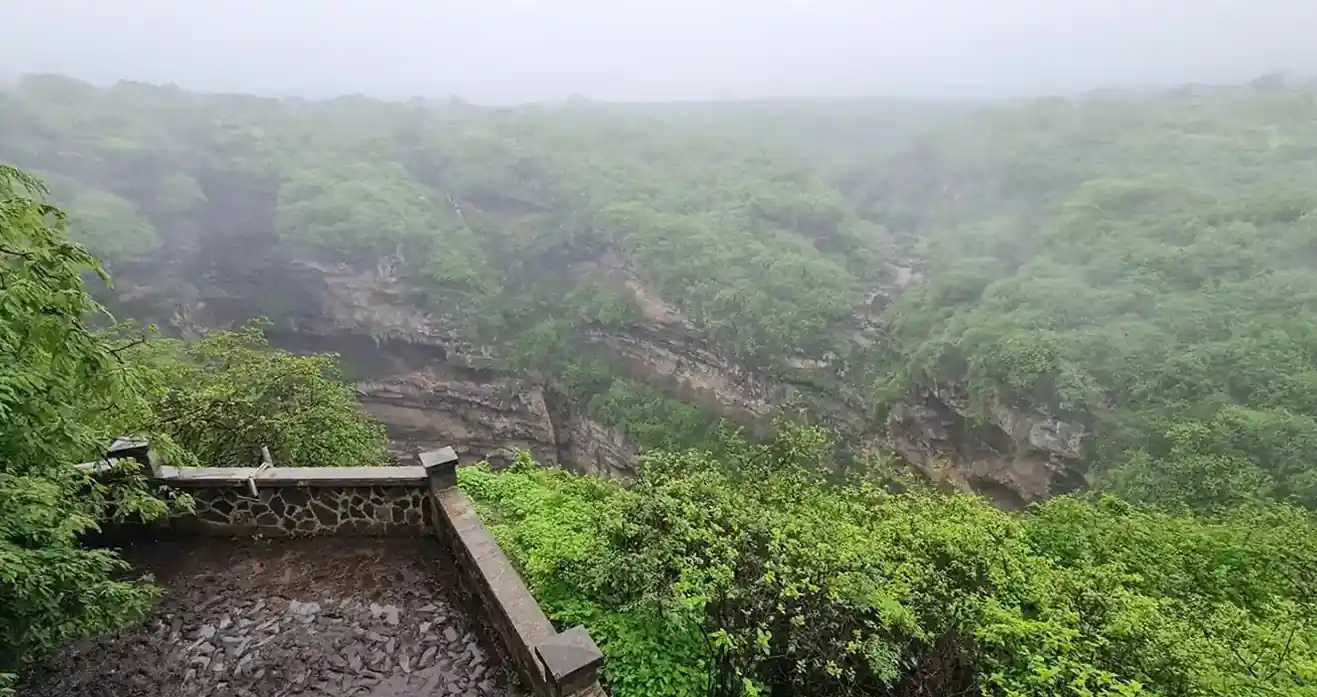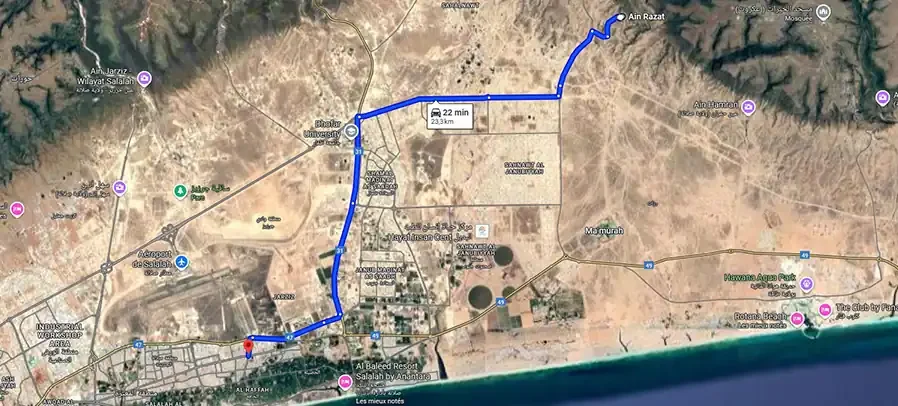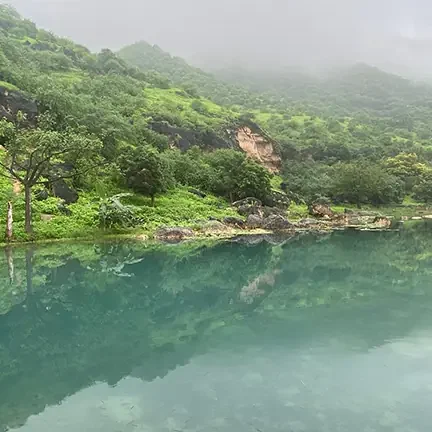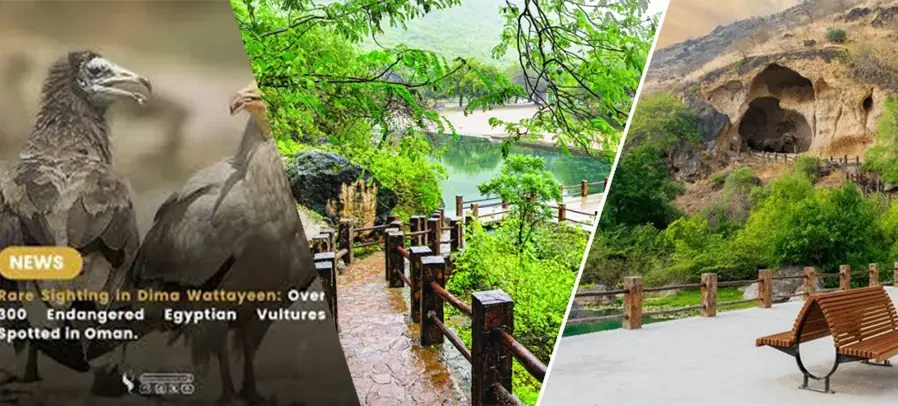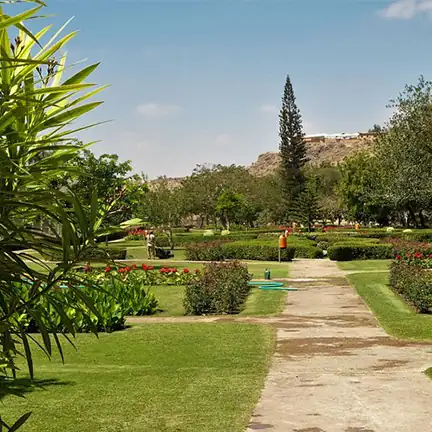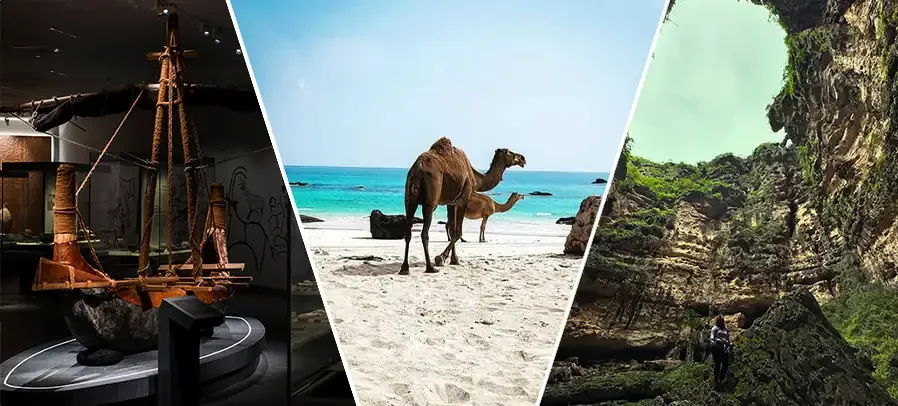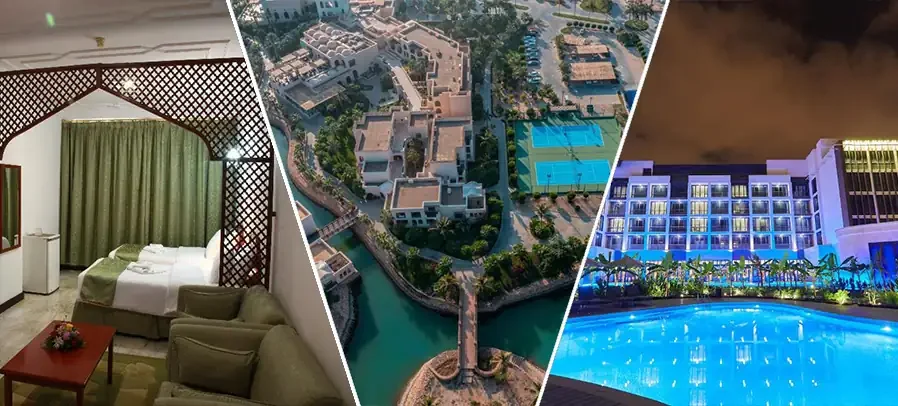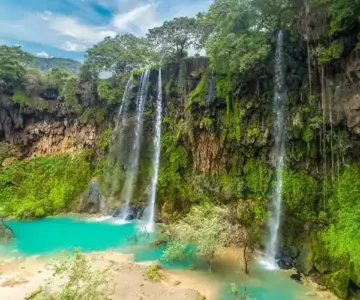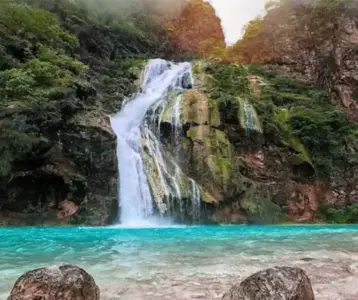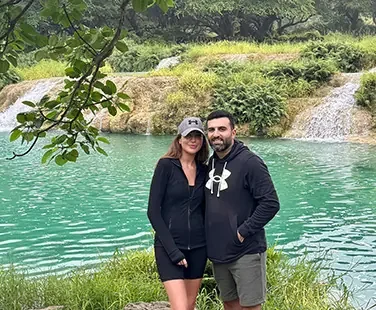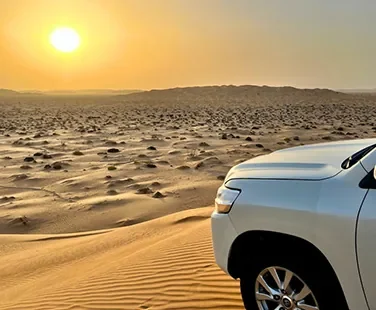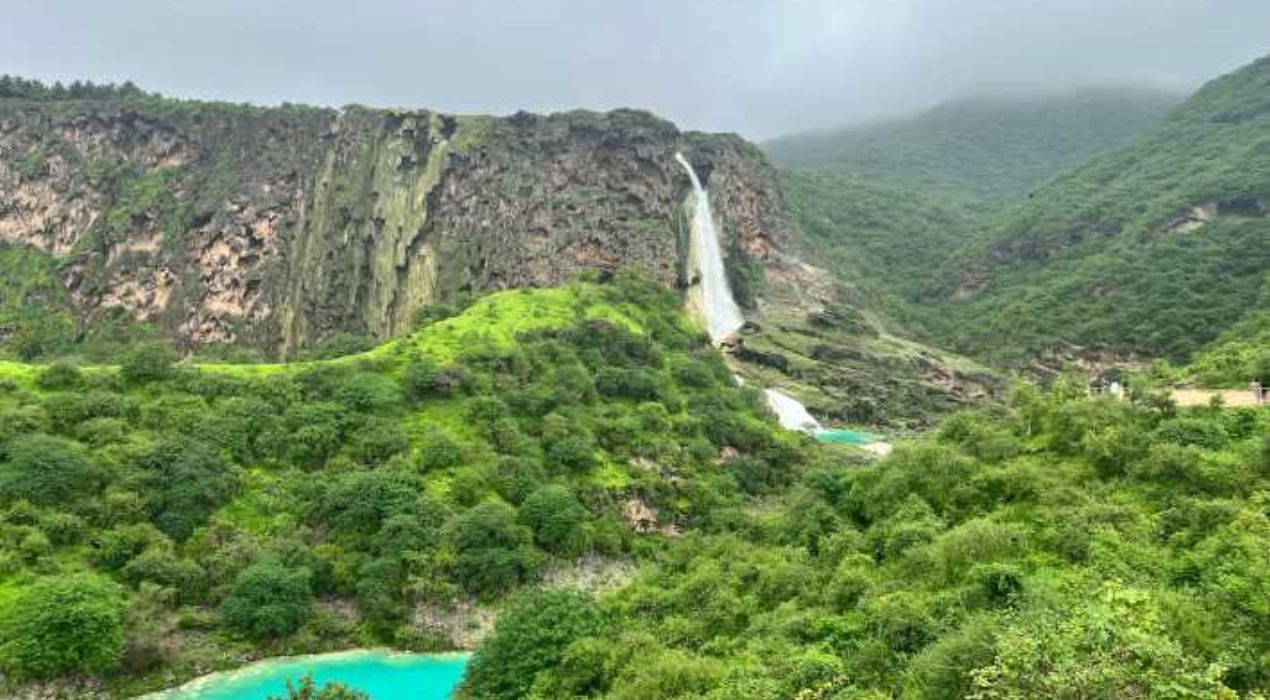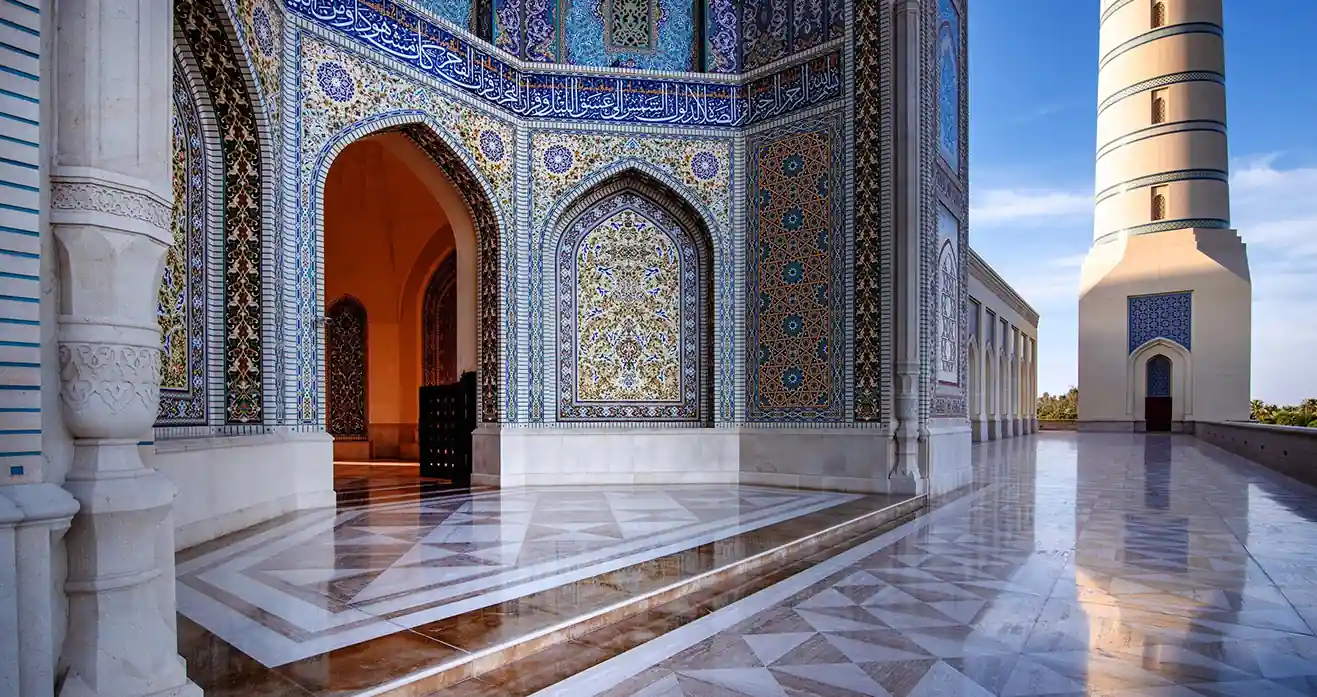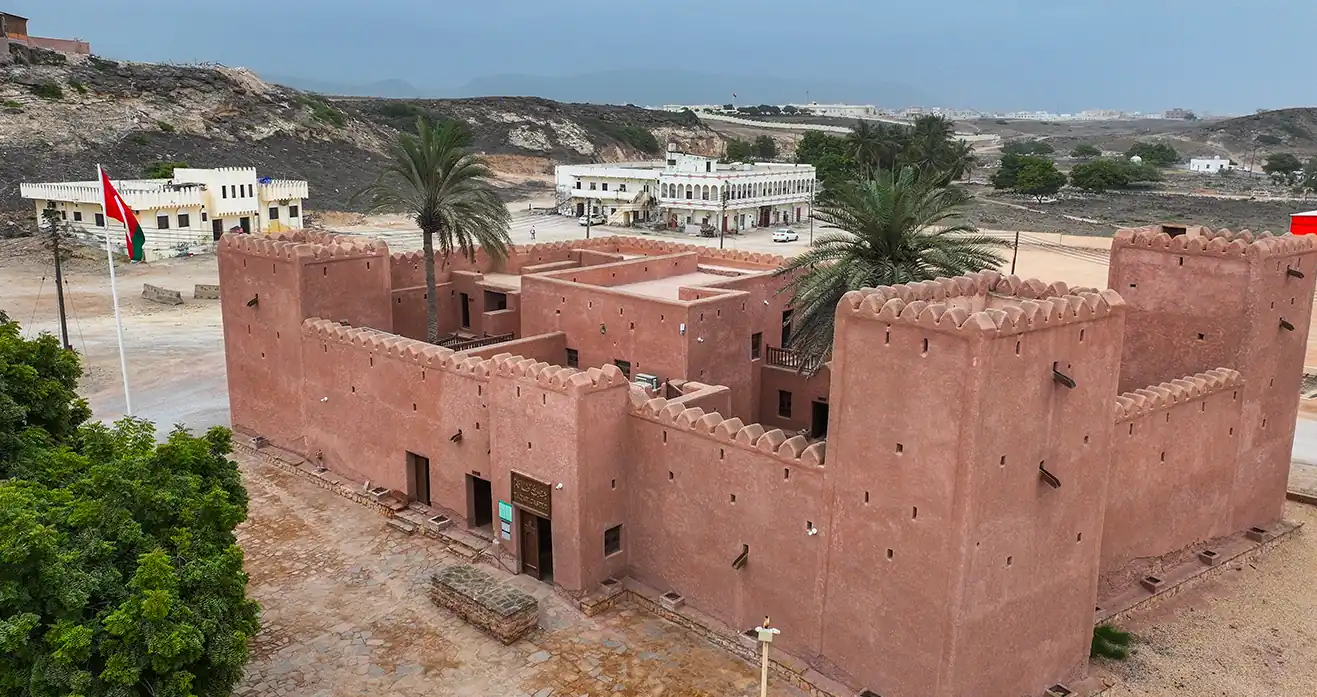Location & How to Get There
Located just 30 km from Salalah city center, Ain Razat is easy to reach by car—only a 20 to 35-minute drive. The roads are well-paved, and taxis or organized tours are also available for visitors who don’t want to drive.
Travel tip: Renting a car gives you the flexibility to explore nearby attractions like waterfalls, beaches, and historical sites.
Best Time To Visit Ain Razat Salalah Oman
The magical Khareef season (June–September) transforms Ain Razat into a green paradise. Waterfalls flow at their peak, and the air is fresh and cool.
Peak season (Khareef): Vibrant greenery, flowing streams, but busier with tourists.
Shoulder seasons (April–May, Oct–Nov): Pleasant weather with fewer crowds.
Winter (Dec–Mar): Cooler temperatures, but less greenery.
Travel tip: Visit early in the morning for the best light and fewer crowds.
What Makes Ain Razat Special?
1. Natural Beauty
Freshwater springs flow from the mountainside, forming serene pools and streams. The contrast between lush vegetation and rugged cliffs creates postcard-perfect scenery.
2. Activities & Things to Do in Ain Razat Salalah
Picnicking: Relax in shaded areas and enjoy the soothing sound of water.
Photography: Capture stunning landscapes and vibrant wildlife.
Hiking: Explore scenic trails with diverse flora and fauna.
Birdwatching: Spot unique bird species in their natural habitat.
Customize your Trip With Go Safari Salalah
Are our Salalah City Tour places not fulfilling enough? Contact us and tailor a city tour to your aspirations and desires.
Facilities & Travel Essentials
Ain Razat is a natural site with limited amenities. Parking and restrooms are available, but there are no shops or restaurants.
Pack this for your trip:
Comfortable shoes
Sunscreen, hat, sunglasses
Water and snacks
Camera
Light jacket (evenings can be cool)
Cultural Significance & Local Heritage
For centuries, Ain Razat has been a vital water source for local agriculture. Many Omanis believe its waters hold healing properties. Visitors are encouraged to respect the site’s cultural and environmental importance by leaving no trace.
Safety & Responsible Tourism
Nearby Salalah Tourist Attractions
Tawi Atair Sinkhole (“Bird Well”) – a spectacular geological wonder.
Al Baleed Archaeological Park – showcasing Salalah’s rich history.
Beaches of Salalah – pristine stretches of sand perfect for sunset views.
Frankincense Museum – a cultural gem exploring Oman’s heritage.
Where to stay if you plan to visit Ain Razat?
While there are no hotels at Ain Razat itself, Salalah offers everything from luxury resorts to budget-friendly guesthouses, just a short drive away.
Frequently Asked Questions about Ain Razat Salalah
Ain Razat is known for its natural freshwater springs, lush greenery during the Khareef season, and its peaceful atmosphere that makes it one of the most popular tourist attractions in Salalah.
It’s located about 30 km (20–35 minutes by car) from Salalah city center. Visitors can reach it by car, taxi, or through guided tours.
The best time is during the Khareef season (June to September) when the area is at its greenest and water flow is strongest. However, April–May and October–November are also great for fewer crowds.
Yes, there is parking and basic restrooms. However, there are no shops or restaurants, so visitors should bring food, drinks, and picnic supplies.
While the pools and streams look inviting, swimming is not officially encouraged to help protect the site and its ecosystem. Instead, visitors usually enjoy picnicking, hiking, and photography.
Bring comfortable walking shoes, sun protection, water, snacks, insect repellent, and a camera. A light jacket is recommended for cooler evenings.
Conclusion: Why Ain Razat Should Be on Your Salalah Itinerary
A visit to Ain Razat Salalah is more than just a sightseeing trip—it’s an experience that combines natural beauty, cultural heritage, and outdoor adventure. From the refreshing springs and lush landscapes to hiking trails and birdwatching, this oasis offers something for every traveler.
Whether you’re planning a family picnic, a photography adventure, or a peaceful retreat into nature, Ain Razat delivers a memorable experience.
By respecting the environment and embracing responsible tourism, you not only enjoy its beauty but also help preserve it for future generations.
Plan your trip today and discover why Ain Razat is one of the most unforgettable gems in Salalah, Oman.

